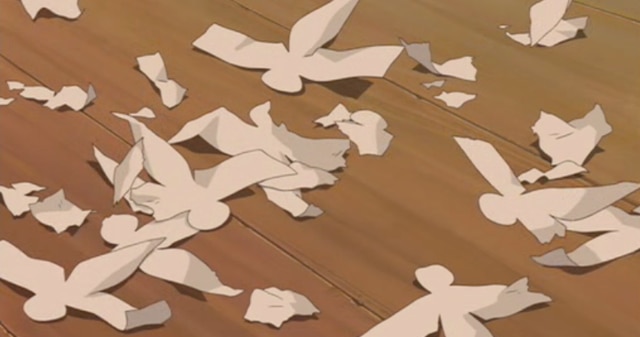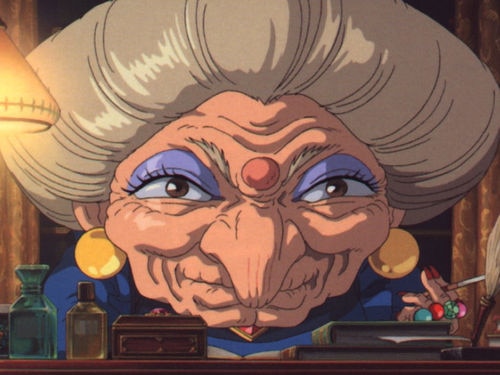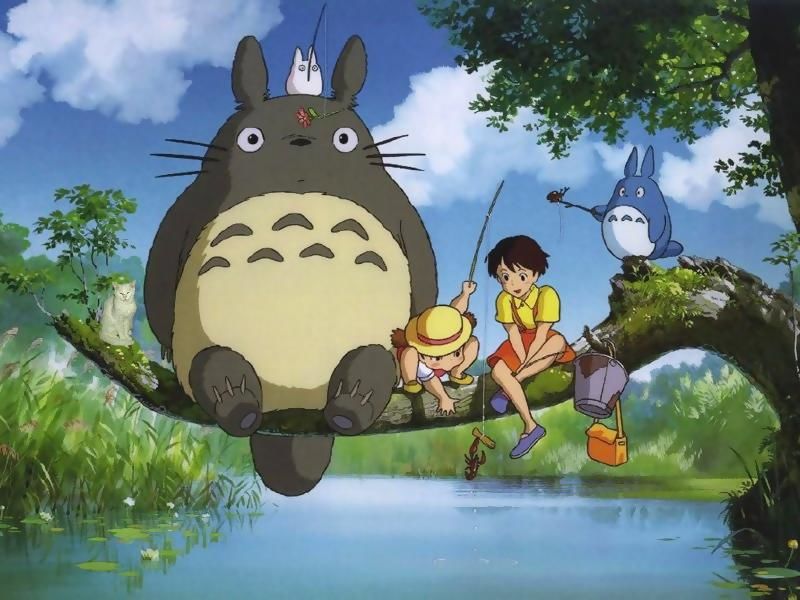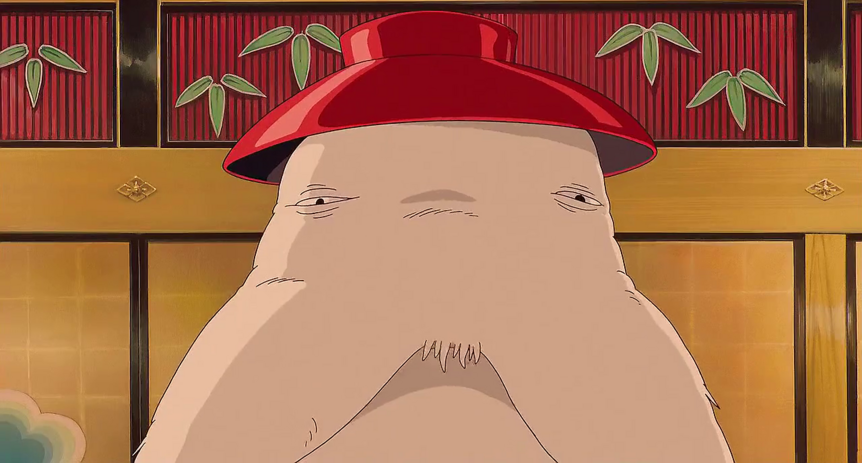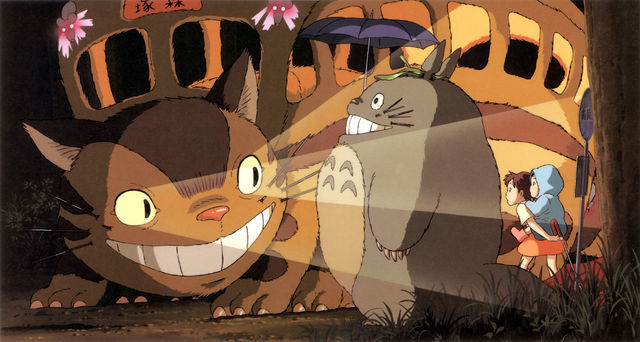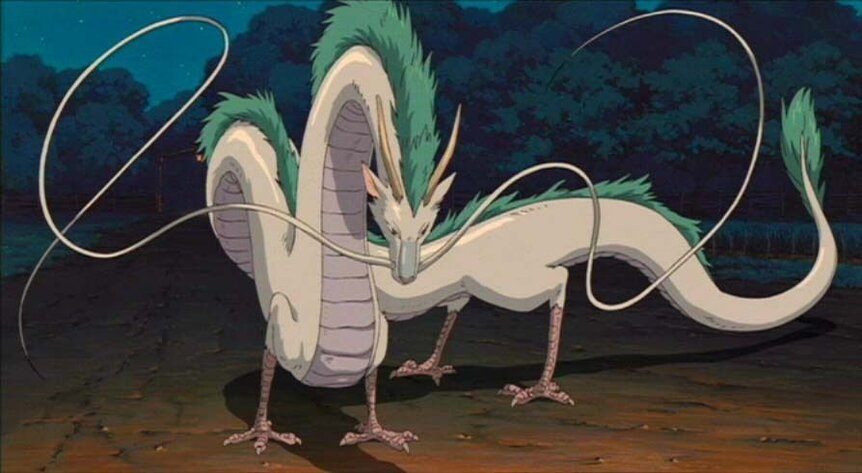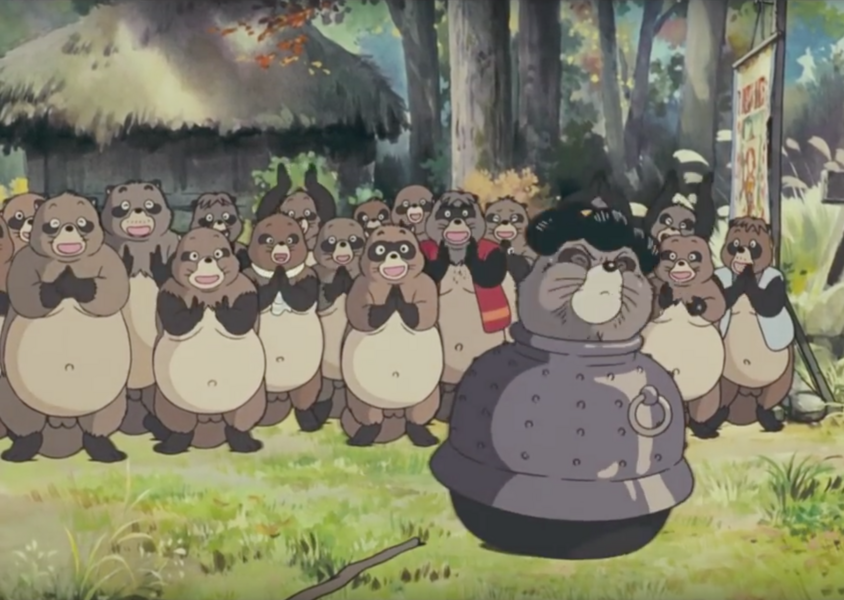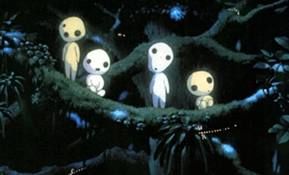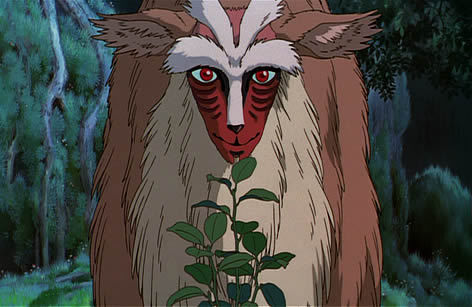Create a free profile to get unlimited access to exclusive videos, sweepstakes, and more!
9 fantastical Studio Ghibli characters conjured from Japanese folklore
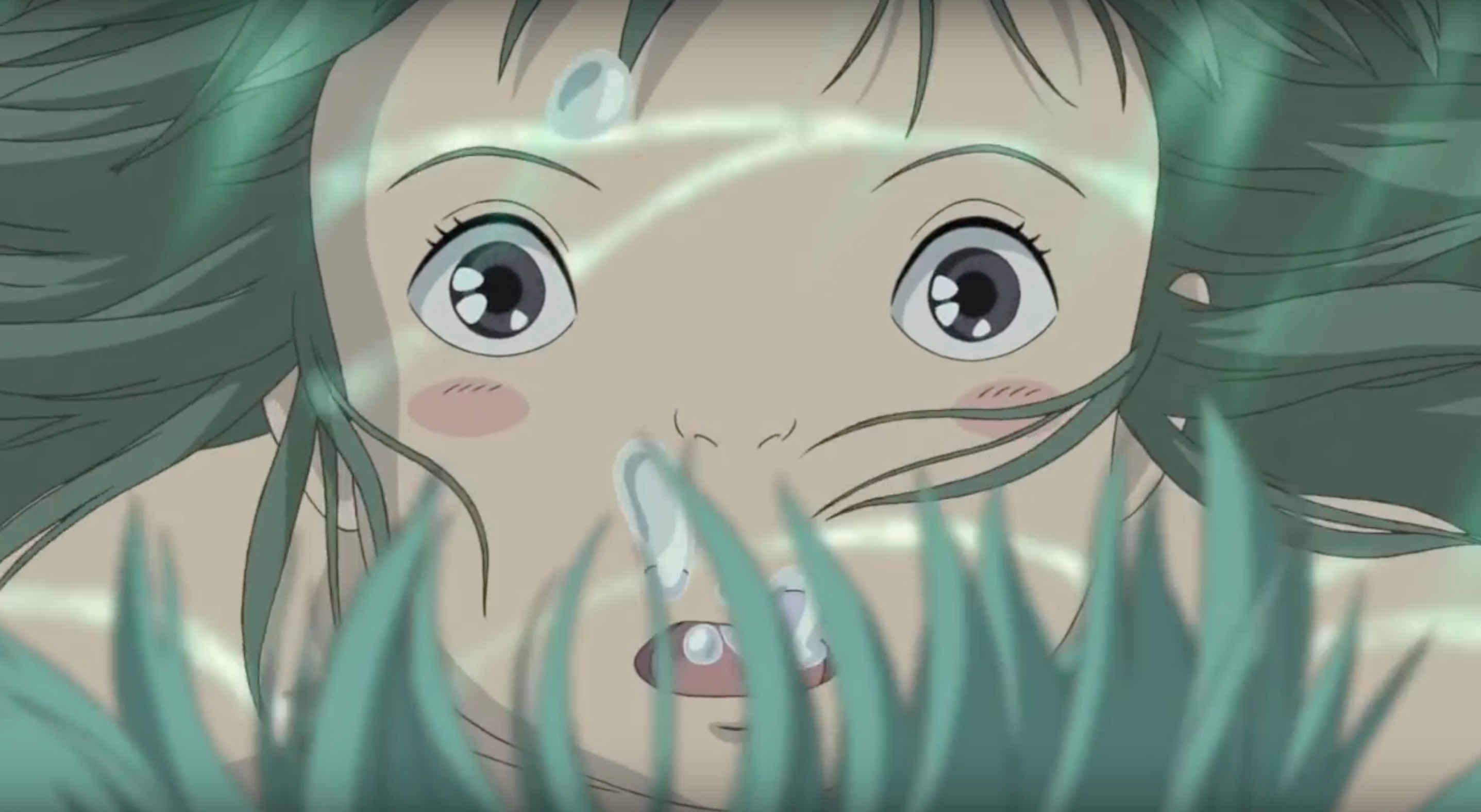
If you’ve ever been spirited away by Haku, taken a ride on the Catbus, or otherwise been enchanted by a Studio Ghibli movie, you may find the myths these creatures arose from are even more magical.
Myth can sometimes be even stranger than movies. Because this month marks the 34th anniversary of Hayao Miyazaki's founding of the god-tier anime powerhouse Studio Ghibli, we’ve gone beyond the human realm and found which folkloric deities inspired some of Miyazaki’s otherworldly characters.
Did you know that the already peculiar Radish Spirit in Spirited Away was inspired by a violent legend of love and death? Or that creatures like Totoro are often believed to hide deep in the woods? Even the title of Princess Mononoke tells you something supernatural is going on (mononoke are spirits that can possess people and even torture them). Many of these characters are yōkai, or paranormal entities that haunt Japanese mythology.
So get on the Catbus and hold on as we take you on a fantastical journey through the folklore that inspired the shapeshifting, spell-casting spirits of Ghibli.
Shikigami (Spirited Away)
Even if you aren’t afraid of birds, you probably would freak out if a swarm of paper birds chased you right into a wall. What look like birds are actually spirits that appear as paper creatures, but can really take any form.
Belief in shikigami arose from Onmyōdō, or traditional Japanese esoteric cosmology (which was also used for divination) around the 7th century. Onmyōji, its practicioners, were thought to be able to have power over shikigami.
Shikigami are usually seen as either invisible or paper manikins that don’t do much except sit there, staring at you without eyes. Because this is a Studio Ghibli movie, they manifest as paper birds that can fly as fast as Haku when he morphs into a dragon. These things are harmless but can be pests when they plaster themselves on someone, like Chihiro found out as she ran to Yubaba’s penthouse after dragon-Haku smashed into it.
Speaking of Yubaba…
Yama-uba (Spirited Away)
The shapeshifting, fire-spitting Yubaba is Ghibli’s iteration of Yama-uba, a mythical mountain witch with dark origins. Yama-uba only seem less terrifying than Yubaba’s behemoth head when you first encounter one. They simply appear like kind old ladies, until they try to eat you.
Yama-uba were first thought to lurk in mountainous regions throughout Japan. They are thought to be either young women who fled to the wild after being accused of crimes, or elderly women abandoned by families who wanted to unburden themselves. These women are thought to gradually transform into inhuman beings with horns and teeth or whatever local legend wanted to create nightmares with. They also practice black magic, so Yubaba’s ability to steal people’s names and turn into a huge hideous bird is not far off.
There is a version of this story in which Yama-uba is much less scary, but come on — you know that’s the version they tell kids.
Obake (My Neighbor Totoro)
Ghosts, gods, or monsters? Obake, which started to appear in Japanese texts in the early 700s, could be any one of these, but they often take the form of shapeshifting entities that can manifest as anything they want. That thing can even be a giant furry creature that lumbers around in the forest and makes weird noises that sound like “Totoro.”
So what exactly is Totoro? The movie never makes it clear whether he is a forest spirit or... something else. The word “obake” literally translates to “thing that changes,” and its definition has always been nebulous. He could be the type of obake that is a living thing, not a spirit at all, who just happens to have really rad supernatural powers that can make trees grow out of nowhere.
Maybe Miyazaki meant Totoro to be mysterious. He is what you think he is.
Oshirasama (Spirited Away)
This spirit appear as a giant anthropomorphic radish in Spirited Away, but his origins are possibly even stranger.
Oshirasama actually have nothing to do with radishes at all. That part just crawled out of Miyazaki’s wonderfully overactive imagination. They emerged from several different traditions, but are most connected to Northern Japan and an obscure ritual commemorating the legend of Tamaya-Gozen, which is why they start out as sticks engraved with the faces of a girl and a horse.
Tamaya-Gozen was a girl so deeply in love with her horse that when her father killed and skinned the animal, she went to pray in front of the skin and it wrapped itself around her. Silkworms were born from this unnatural union. Every year, the Oshirasama are covered in different silks and prayed over by a blind shaman. Way more fascinating than radishes.
Bakeneko (My Neighbor Totoro)
Bakeneko literally means “changed cat.” This kind of shapeshifter is a cat that has changed into a yōkai, or a supernatural creature that can be just as much of a monster, spirit, or demon as an obake. Miyazaki's has obviously warped its form into something as bizarre as a feline bus with moon eyes and an eerie Cheshire grin.
Cats lurk everywhere in yōkai lore because of their preternatural nature — think eyes that glow in the dark and the ability to walk in ghostlike silence. Bakeneko are believed to have powers that let them do everything from cursing humans to manipulating zombies. It is unknown how long they have been a part of Japanese folklore, but during the Edo period, seeing a cat lick lamp oil (which was actually fish oil) was thought to be an omen.
While turning into a vehicle isn’t a bakeneko's usual thing, it’s easy to see how Miyzaki changed the mythology’s shape.
Mizuchi (Spirited Away)
Who wouldn’t want a magical river dragon literally spiriting them away?
Mizuchi are water dragons or serpents that are sometimes thought of as water deities. Haku is actually short for Nigihayami Kohakunushi, or “god of the swift amber river.” Unfortunately for Chihiro, mizuchi weren’t always believed to morph into cute, green-haired, preteen boys who would save you even if it meant crashing headfirst into Yubaba’s wall.
A legend dating back to the early 700s describes one mizuchi as a venomous snake-dragon-thing that was finally vanquished by a man named Agatamori. Instead of charging in with a sword and going for the monster’s head, Agatamori challenged it to sink three gourds he threw into the river. He finally slew it when it failed. Anyone who ships Haku and Chihiro is probably crying by now.
Tanuki (Pom Poko)
So tanuki, or raccoon dogs, actually exist. It’s just that, unlike Pom Poko, they don’t shapeshift into humans so they can be taken seriously when they try to save the world from pollution and destruction.
The shifter that has been hanging around Japanese folklore almost longer than human memory is the yōkai version of the tanuki, or bake-danuki. The most Tanuki legends still linger around the Sado Islands of Niigata Prefecture and in Shikoku. Some stories have them turning into humans, though they seem to prefer singing in the springtime to political agendas. They are also rumored to take other forms and possess people.
Tanuki statues are everywhere in Japan — especially outside businesses. They are supposed to be good luck for bringing in money, as if the creature is beckoning you to come in and be generous with your wallet. What’s with the ponderous junk? Like many things in folklore, they just kept growing.
Kodama (Princess Mononoke)
Those ghostly white things in the trees aren’t Halloween decorations. Kodama originated in the forests and more mountainous regions of Japan and are thought to have emerged from a tree god that was chronicled about during the early 700s. They are forest spirits that are attached to the trees, kind of like the dryads of Greco-Roman mythology. If you hear an echo in the woods, it is likely to come from kodama.
Being one with a tree means that the spirit appears so long as the forest is healthy. Shrines to kodama can be found in Japanese forests. In Princess Mononoke, after immortality-seeking Lady Eboshi cruelly hacks off the Forest Spirit’s head (we’ll get to that later), the kodama start to vanish as its lethal blood oozes through the forest. They only start to reappear after the head is returned and the forest starts growing back.
Oh, and don’t ever try to cut down a kodama’s tree, because you will be cursed.
Yatsukamizuomitsuno (Princess Mononoke)
Also known as Shishigami (“deer god”) in Princess Mononoke, this is a god you do not mess with. Cut his head off and and he grows terrifying tentacles and sheds blood that kills everything it touches until he gets that head back.
Nagahama Shrine in Shiname Prefecture is dedicated to Yatsukamizuomitsuno, who may not always look like a mystical deer, but has the power to create a planet–he must if an ancient legend says he was first thought to have brought over enough land to extend Izumo Province. He is believed to morph into his humanoid Night-Walker form, Daidarabotchi, after dark, like he does in the film. This deity is thought to grow so massive after sundown that he has no problem picking up mountains; that’s nothing when he can create a planet.
That’s proof right there of just how much power there is in the myth behind the magic.
